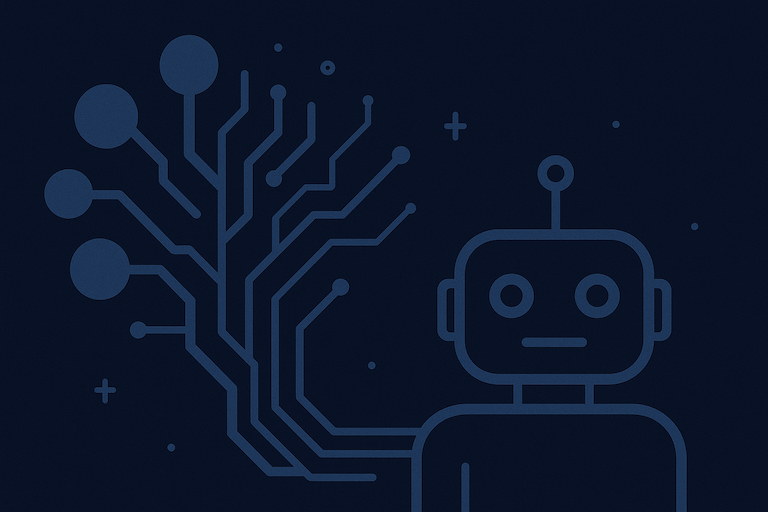The AI Revolution Isn't a Switch You Flip

We’ve all seen the headlines. “AI is taking over.” “The future is now.” And if you’ve been anywhere near a product roadmap in the past 18 months, odds are someone has scribbled “AI” into a Q3 objective and called it innovation.
But here’s the truth: the AI revolution won’t happen overnight — and that’s not a failure. It’s just how revolutions actually work.
Harvard Business Review just published something that cuts through the noise. In “The AI Revolution Won’t Happen Overnight,” Paul Hlivko—a CIO with three decades of tech implementation experience—delivers a reality check every company chasing AI dreams needs to hear.
His opening assessment of McKinsey’s $17.1–$25.6 trillion prediction? “A seductive vision. It’s also a hallucination.”
That’s not pessimism talking. That’s pattern recognition.
The Same Movie, Different Decade
“I’ve seen this movie before. It rarely ends the way the trailer promises.”
Anyone who’s been in tech long enough knows this feeling. Remember when blockchain was going to revolutionize everything? When VR was going to replace physical reality? When the metaverse was going to be the next internet?
The pattern is always the same: revolutionary technology emerges, consultants create trillion-dollar projections, companies panic about being left behind, massive investments follow, reality hits, and the real value emerges slowly, quietly, in practical applications nobody predicted.
AI is following this exact playbook.
Hype Is Outpacing Reality
Here’s what Hlivko nails: AI capabilities are improving exponentially, but most organizations are adopting it in a straight line—slowly, hesitantly. That gap between what’s possible and what’s practiced? It’s a problem. And it’s widening.
We’ve all seen the slide decks that throw around “AI-powered X” like it’s a checkbox. However, integrating AI is not as simple as flipping a feature flag. It demands rethinking systems, data governance, team dynamics, and customer interactions.
The tech might be magical, but deploying it isn’t.
It’s Not Just About the Tech
There’s a false comfort in treating AI as a tool you install, rather than a force that reshapes how your organization thinks. Culture, training, governance—all of it matters.
You don’t need a CTO with a ChatGPT wrapper. You need people who understand what the model does, what it doesn’t, and how it fits into your product and process ecosystem.
What Actually Works
The companies winning with AI today aren’t chasing trillion-dollar visions. They’re solving specific problems:
- Development teams cutting debugging time by 40% with AI-assisted code review
- Customer service operations handling 3x more inquiries with AI-powered response suggestions
- Marketing teams producing personalized content at an unprecedented scale
These aren’t headline-grabbing use cases. They won’t generate trillion-dollar economic impact projections. But they’re real, measurable, and happening now.
Measured Beats Magical
The revolutionary applications everyone’s predicting—AI running entire businesses, solving world hunger—require infrastructure, regulatory frameworks, and social changes that take decades to develop. However, productivity applications are available today for companies that are smart enough to implement them thoughtfully.
So, before slapping AI on the next sprint board, ask:
- What’s the problem we’re solving?
- How will AI actually help?
- Are we ready to wield this tool with the care it demands?
If the answer’s “maybe,” then good—you’re thinking clearly.
The Three C’s That Actually Matter
Want to change how your organization approaches AI? Focus on three fundamentals:
Culture - Stop treating AI adoption like a technology rollout. It’s an organizational shift. The teams succeeding with AI aren’t just deploying models—they’re building environments where experimentation is safe, failure is learning, and iteration is expected.
Critical Thinking - Question everything. Not just the AI outputs, but the problems you’re trying to solve. Why this use case? Why now? What happens if it doesn’t work? The companies getting AI right are the ones asking hard questions before, during, and after implementation.
Curiosity - The best AI implementations come from teams genuinely curious about what’s possible, not just what’s profitable. They’re exploring edge cases, testing assumptions, and discovering applications nobody planned for. Curiosity drives the experimentation that turns hype into value.
These aren’t soft skills. They’re competitive advantages. The AI revolution is happening. It’s just not happening the way the consultants predicted. It’s happening one practical use case at a time, one efficiency gain at a time, one solved problem at a time.
And it’s happening fastest at companies that prioritize how they think over what they deploy.
The revolution is here. It’s just not turnkey.